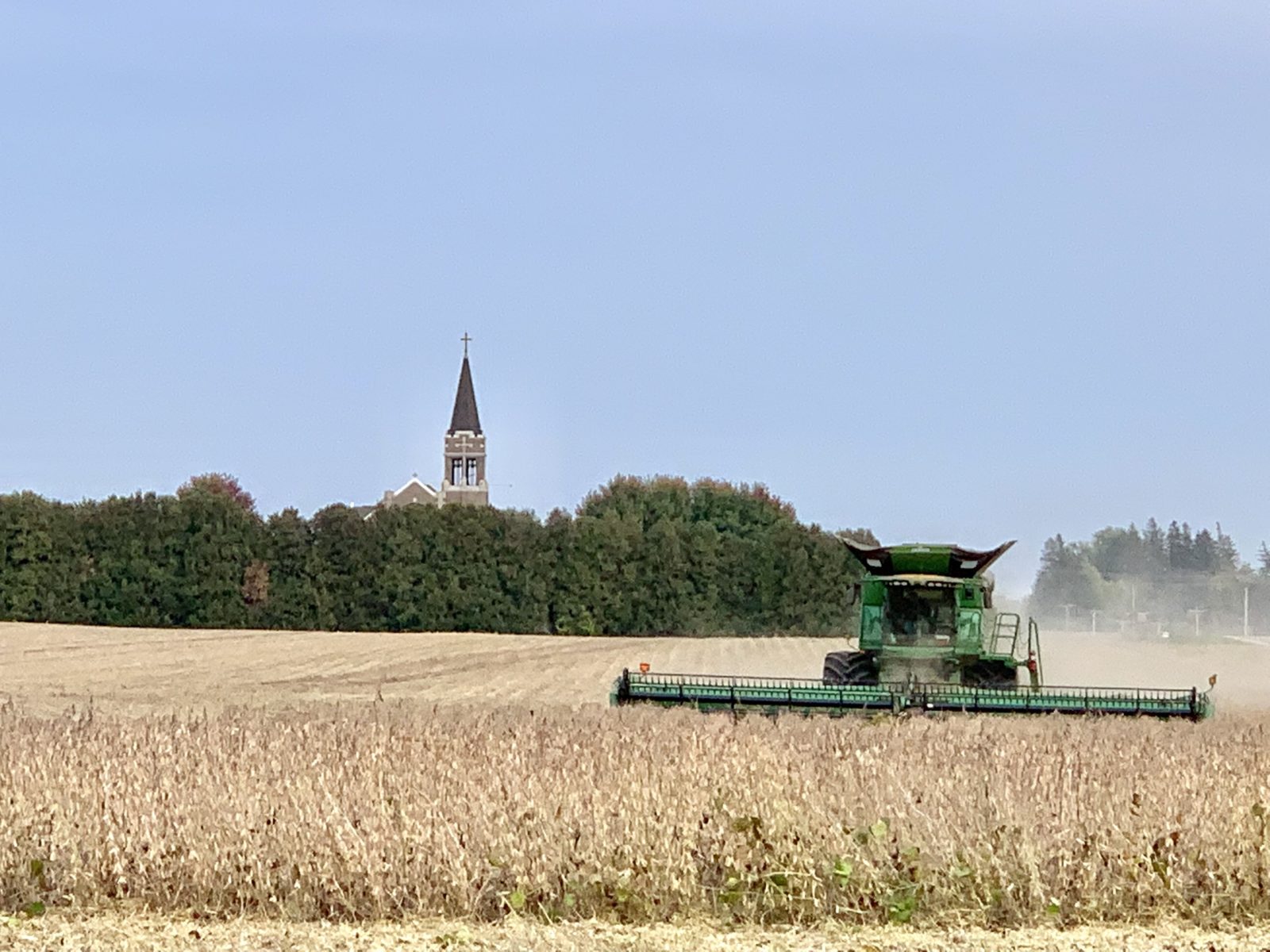We have been harvesting for over a month in our area of Minnesota, in the upper U.S. Midwest. Overall, we’ve been happy with our yields, especially considering how dry some of our fields stayed throughout the season. Our fields stretch about 48 km, or 30 miles, north to south. While the more southern fields got decent rains, the further north our fields were located, the drier they were throughout the season.
After having ideal planting conditions, though planting dates were very spread out, we started harvesting soybeans in October.

We do several things while harvesting food beans to protect their quality. We wait until the soybeans are fully ripe. That ensures the stalk of the plant is dry. Often the beans are mature, but the stems of the plants are still green. If we harvest too soon, that green stalk can stain the beans and impact the color of the final product. This season, we finished harvesting those fields in mid-October, with zero staining. One variety of our soy food beans yielded well, while the other suffered from dry conditions.
My son Brian and I run our combines the most often in our soy food beans. As we do this, we constantly consider quality. Our combines have a camera system on them that takes a snapshot of the soybeans after they have been separated from the plant, as they move into the grain tank on the combine. We monitor these pictures to keep a close eye on the quality of the soybeans. We run the separating rotor inside the combine as slowly as possible to minimize splitting or cracking the seed coats of the individual beans. The separating rotor is a cylinder that rotates to allow rubbing between parts of the machine to gently knock soybeans from their pods. The photos let us know if we need to make adjustments.

When harvesting commodity soybeans and corn, the combine unloads into a grain cart that carries the grain to the semitrucks on the edge of the field. However, we unload the food beans from the combine directly into the semitruck to eliminate a handling step, which protects quality. The time it takes to drive the combine to the semi also slows the harvest progress.
The semitrucks haul the soy food beans to our storage bins. We use a conveyor belt system to move them from the truck into our bins, as these belts are gentler than traditional augers.
The storage bins have a false floor that allows air to flow through the stored soybeans. We keep fresh air on them, and we monitor their moisture content. To maintain quality, the moisture content of the beans must be no more than 13%.
The soybeans remain here on our farm until the company we work with requests them to fill customer orders. Because our customers need a supply of soybeans year-round, we may start shipping during harvest, but we often store some soybeans until late the following summer. We have yet to ship any of our 2022 food beans.
We harvested the soybeans from the in-season sulfur application trial we participated in this year. Unfortunately, that field was one of our driest soybean fields, so yields were low. We are waiting for the private company to analyze the results of the trial to help us learn more.
Once we finished harvesting soybeans, we switched to corn harvest. Yields have been about average, which is good, considering that many of our corn fields did not get adequate moisture. We expect to finish harvest by mid-November.

Then our attention will be completely focused on preparing for next season. That preparation includes planting cover crops in fields that will be planted to soybeans next year. Because of our environmental conditions, we typically plant corn in a field for two years, and then rotate to soybeans. This reduces soybean disease pressure, which also protects crop quality.
The updated grain handling system that my sons and I worked on much of the summer worked really well. We have been very happy with the updates we made, and adjusting to the new system went very smoothly.
I have enjoyed sharing the process of raising soy food beans throughout the 2022 growing season. While the growing season is hectic, I look forward to connecting with soy food customers during the winter. This January, the Specialty Soya and Grains Alliance (SSGA), with sponsorship from the U.S. Soybean Export Council, will host a meeting in Hawaii, because of its convenience for our Asian customers. I will be attending, and I hope to meet many of our customers to discuss how U.S. Soy can continue to provide them a reliable, sustainable supply of high-quality soy food beans.

